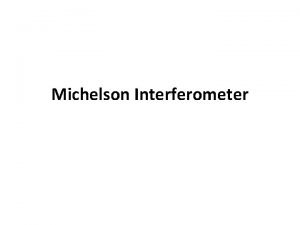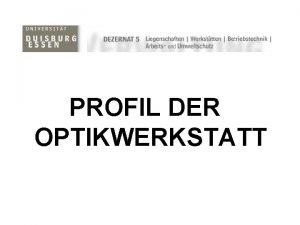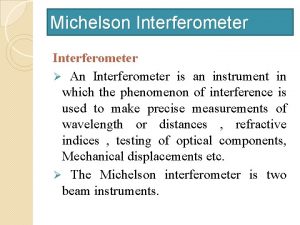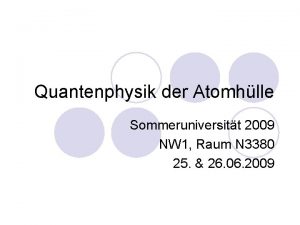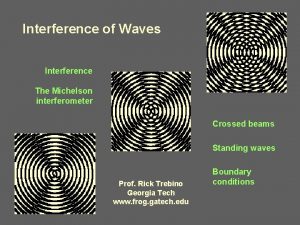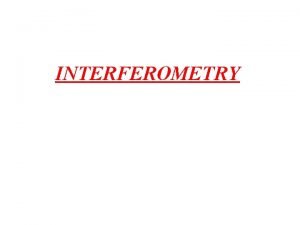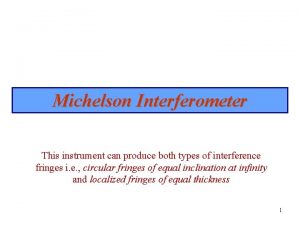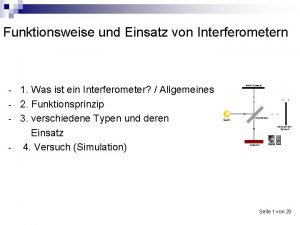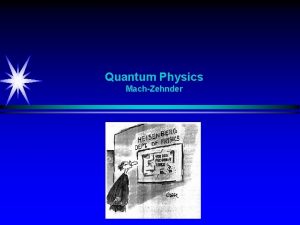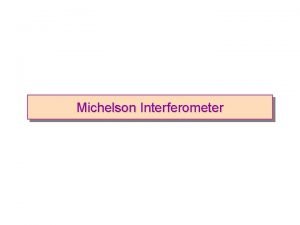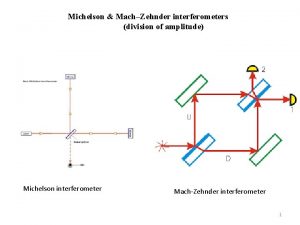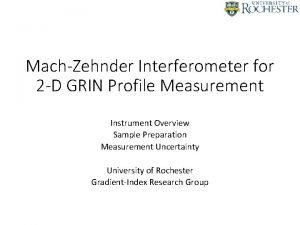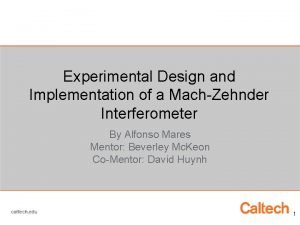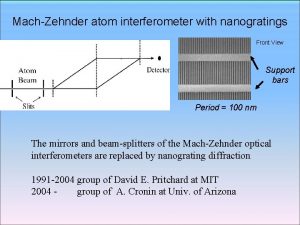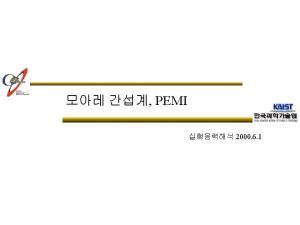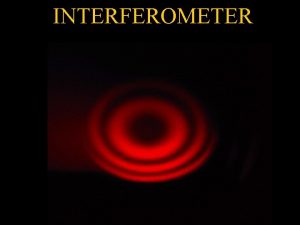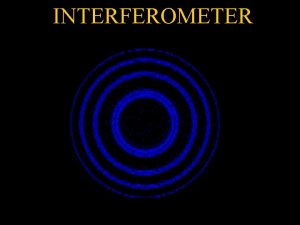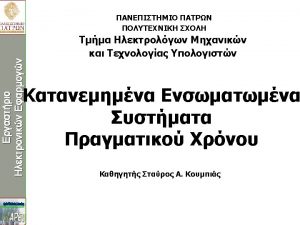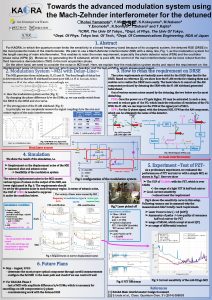MachZehnder interferometer The MachZehnder interferometer is a device















- Slides: 15

Mach–Zehnder interferometer The Mach–Zehnder interferometer is a device used to determine the relative phase shift variations between two collimated beams derived by splitting light from a single source. The interferometer has been used, among other things, to measure phase shifts between the two beams caused by a sample or a change in length of one of the paths. The apparatus is named after the physicists Ludwig Mach (the son of Ernst Mach) and Ludwig Zehnder. If it is decided to produce fringes in white light, then, since white light has a limited coherence length, on the order of micrometers, great care must be taken to simultaneously equalize the optical paths over all wavelengths, or no fringes will be visible. As seen in Fig. 1 (the figure has a mistake where both candle imageries should be exchanged), a compensating cell made of the same type of glass as the test cell (so as to have equal optical dispersion) would be placed in the path of the reference beam to match the test cell. Note also the precise orientation of the beam splitters. Figure 1. The Mach–Zehnder interferometer, we imagine analyzing a candle flame. Either output image may be monitored.

DETECTOR BEAM SPLITTER SOURCE MIRROR

Lab 1 – Mach-Zehnder Interferometer Unpolarizing Beam Splitter Mirror Linear Polarizer Circular Aperture 45 Degree Linear Polarizer Mirror Polarizing Beam Splitter

“Beam Splitting” • “The process of splitting becomes conceptually difficult when we think of the beam as consisting of spatially localized energy packets, or photons…what happens to the individual photon when it hits the mirror? Does it split, or does it remain as a whole? ” • Introduction to Quantum Optics from Light Quanta to Quantum Teleportation, By Harry Paul Beam splitter

Which-Way Theory • At 45 degrees, photon does not know s or p polarization, so there are interference fringes • The 45 degree linear polarizer ensures that there is an equal probability that the photon will travel down one arm or the other

• Sample picture of Mach-Zehnder Interference Fringes:

Calculation of Fringe Visibility • V=(Imax-Imin)/(Imax+Imin) • Example of Fringe Intensity Pattern: (Fringe Visibility) V= 0. 658517

8 Electromagnetic waves: Multiple beam Interference

Multiple beam interference Let 12 = 21= ’ 12= 21= ’ ’ ’ Eo ( ’)3 ’Eo ( ’)5 ’Eo ( ’)7 ’Eo n 1 n 2 n 1 ’ A B C D ’ Eo ( ’)2 ’Eo 9 ( ’)4 ’Eo ( ’)6 ’Eo

Multiple Beam Interference • • Assume a (for the time being) a monochromatic source , ’ small ( < 30 o) usually Now | | = | ’| >> , ’ Thus reflected beams decrease rapidly in amplitude (from first to second) But amplitude of adjacent transmitted beam is about the same amplitude Amplitude of successfully reflected beams decreases slowly (from the second) Thus treat in transmission where contrast should be somewhat higher The latter is the configuration of most applications 10

Multiple beam interference • Maximum intensity when, 11

Multiple beam interference • Thus maxima are circles in focal plane of lens – or rings • The maximum intensity • And intensity distribution is, 12

Multiple beam interference • Minima intensity when, • Intensity distribution, • If R > 0. 9 Imin<<Imax 13

Multiple beam interference • Let the contrast, or co-efficient of finesse be defined by, • Then the transmitted light is described by and Airy function, • The same analysis for the reflected light gives 14

Typical parameters in an experiment • Consider a quartz slab (n 2=1. 5) of thickness d ~ 0. 5 cm • The condition for constructive interference requires, • For light of wavelength o = 500 nm, incident at a small angle , i. e. ’ also small, and m is large: 15
 Cpu output device
Cpu output device Magdalena ridge observatory
Magdalena ridge observatory Cara kerja interferometer michelson
Cara kerja interferometer michelson Interferometer oberflächenmessung
Interferometer oberflächenmessung What is the principle of michelson interferometer
What is the principle of michelson interferometer Laser interferometer space antenna
Laser interferometer space antenna Mach zehnder interferometer leifi
Mach zehnder interferometer leifi Constructive vs destructive interference
Constructive vs destructive interference Npl flatness interferometer light source
Npl flatness interferometer light source Michelson interferometer formula
Michelson interferometer formula Interferometer funktionsweise
Interferometer funktionsweise A tagout device is preferable to using a lockout device.
A tagout device is preferable to using a lockout device. Kelompok input
Kelompok input ưu thế lai là gì
ưu thế lai là gì Thẻ vin
Thẻ vin Thể thơ truyền thống
Thể thơ truyền thống


